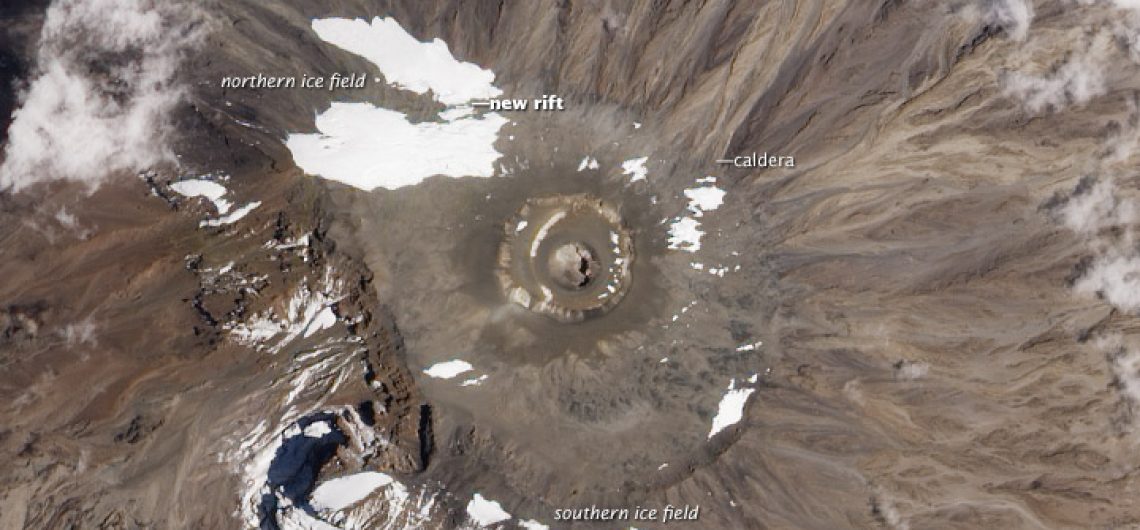Scientists warn that the peaks of Mount Kilimanjaro, the world’s tallest free-standing mountain, may soon be ice-free.
According to Nasa’s Earth Observatory, the mass of ice on the peak of the 19,341ft dormant stratovolcano in Tanzania fell by more than 85% between 1912 and 2011.
Kilimanjaro’s north ice field has also fragmented, according to Kimberly Casey, a glaciologist at NASA’s Goddard Space Flight Centre, who visited the mountain earlier this year.
The glacier has been growing a hole since the 1970s, but this is the first year it has been witnessed splitting in half. Dr. Casey explained, ‘We were able to walk on land — or even ride a bicycle — right through the chasm.’
Scientists now say it’s not a question of whether, but when, Kilimanjaro’s ice will go. Estimates vary, but some scientists believe it will be extinct by the year 2060.
The views from the summit of Mount Kilimanjaro are both bizarre and breathtaking.
Climbers may stare down on a dense blanket of clouds below that seems to extend eternally in the horizon after rising through numerous habitats, including farming, luxuriant rainforest, alpine desert, and a virtual dead zone near the peak.
However, ice dominates the image in the near foreground. On an otherwise featureless, sand-covered plateau to the north, a shelf-like slab of ice with a sheer vertical cliff rests.
A second ice field pours down the edge of the plateau and down the mountain’s southern face in the opposite direction.
Mount Kilimanjaro’s southern ice field: Despite its tropical position, the dry, cold air at the summit of the mountain has supported enormous amounts of ice for over 10,000 years.
‘We could have rode a bicycle across the fissure,’ says Kimberly Casey, a Nasa glaciologist who visited Kilimanjaro earlier this year and discovered the north ice field had split apart.
Despite its tropical setting, the dry and chilly air at the summit of Mount Kilimanjaro has supported enormous amounts of ice for over 10,000 years.
The crater has been entirely encircled by ice at times. Kilimanjaro’s ice has survived many warm spells, droughts, and times of dramatic climatic change, according to ice core data.
Researchers believe that rising air temperatures as a result of global warming may be contributing to ice loss, but that a variety of other variables are just as essential, if not more so.
For example, an increasingly dry regional climate is depriving the mountain of the fresh snow needed to keep the ice fields alive.
Drier air also reduces cloud cover, enabling more sun radiation to reach the ice surfaces and warm them.
In September of this year, Dr. Casey traveled to Kilimanjaro as part of a study mission.
![]()


Comments